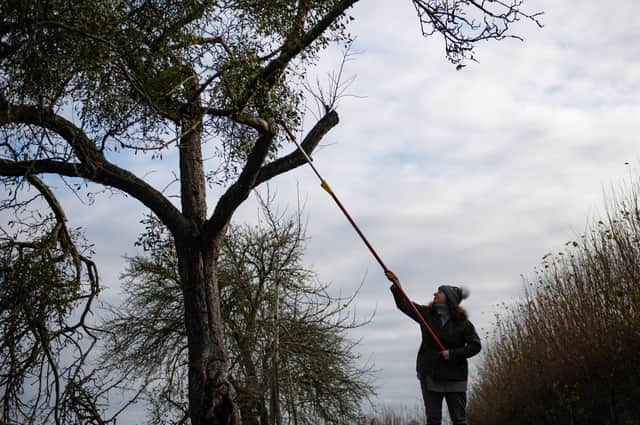Secrets of mistletoe to be uncovered by Scottish scientists


Edinburgh scientists are set to be the first to sequence mistletoe’s genome – the sum total of its entire DNA – which is more than 40 times the size of the human genome.
The mistletoe genome will contribute to the Darwin Tree of Life Project, which aims to sequence the genomes of over 60,000 British and Irish species within the next 10 years.
Advertisement
Hide AdAdvertisement
Hide AdThe research is pioneering the use of ground-breaking gene sequencing technology, that could also be used to better understand diseases and cancers in humans and animals.
Researchers at the University’s Edinburgh Genomics facility will be one of the first in Europe to use the PacBio Sequel IIe System, which is designed to read long fragments of DNA from virtually any species, with extremely high accuracy.
The system produces eight-times more data than earlier sequencers, making sequencing complex genomes more affordable. Experts will use the technology to rapidly decode the mistletoe’s entire DNA.
Mistletoe is a hemi (partial) parasite which attaches to a tree via suckers roots and absorbs some water and nutrients from its host plant. However, it also produces some of its own food via photosynthesis in its green leaves.
Advertisement
Hide AdAdvertisement
Hide AdIt can be found in the UK on a variety of host plants including apple, lime, poplar, sycamore, ash and hawthorn. However it is rarely found on oak.
The results from the study could reveal how mistletoe has evolved to become a parasite in the first instance.
Project partners, the Royal Botatanic Garden Edinburgh, will provide the mistletoe sample, collected from near the Scottish Gallery of Modern Art.
Dr Javier Santoyo-Lopez, Service Manager at Edinburgh Genomics sequencing facility, said: “PacBio’s Sequel IIe System is a very powerful addition to our battery of sequencers at Edinburgh Genomics, enhancing the sequencing services we provide to researchers at the University at the same time as reducing costs.
Advertisement
Hide AdAdvertisement
Hide AdIts capability to accurately read large fragments of DNA will allow us to fully characterize the genetic information of many organisms, such as the mistletoe, as well as detect complex genomic alterations that could be the cause of rare diseases or cancers.”
Dr Alex Twyford, Lecturer in Botany at the School of Biological Sciences and Darwin Tree of Life University lead, said: “We’re excited to be the first to attempt to sequence the complex genome of the mistletoe, using the new PacBio Sequel IIe System. The results will become part of the Darwin Tree of Life Project, to sequence the genomes of all 60,000 British and Irish species within the next ten years.
Jonas Korlach, PhD, Chief Scientific Officer of PacBio, said: “We are proud to support the Darwin Tree of Life project and excited to see the complexity of a festive holiday plant like mistletoe revealed with HiFi reads. Projects and initiatives such as these are vital to generating complete reference genomes that advance research focused on understanding and preserving Earth’s biodiversity.”
This equipment was funded by a grant from the Biotechnology and Biological Sciences Research Council (BBSRC). The Darwin Tree of Life project is funded by Wellcome.